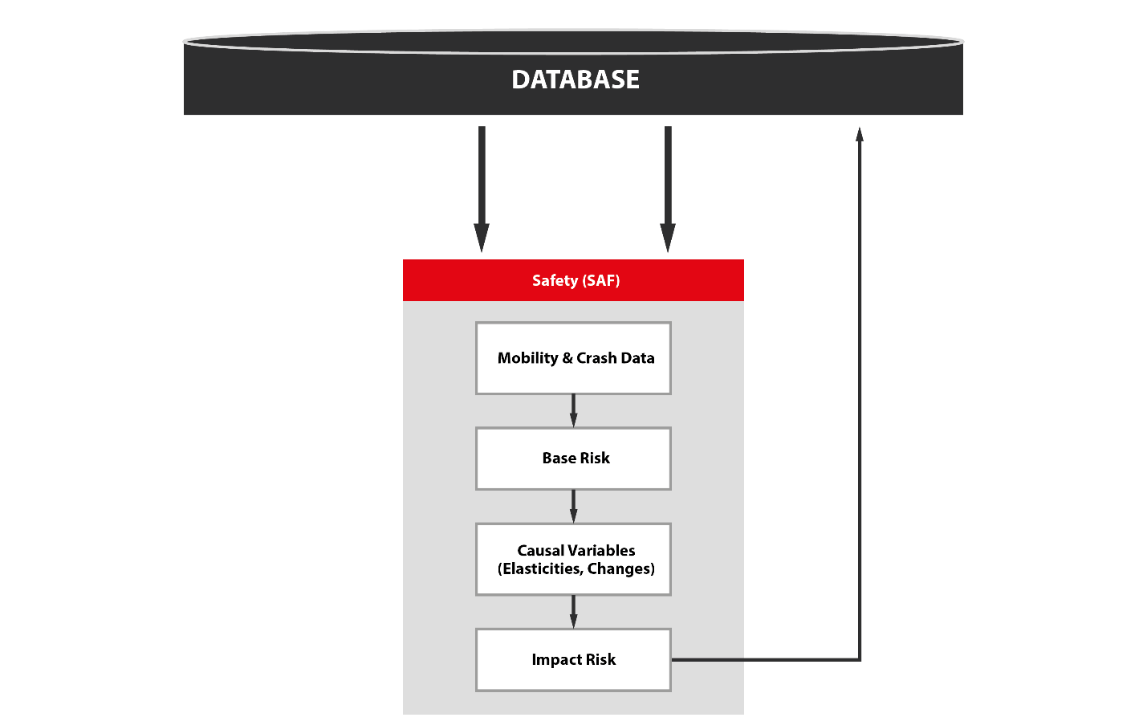Final Version
The Safety module (SAF) assesses the impact of transport policy measures on safety, and yields predictions of the number of fatalities and injuries, and associated social costs.

The required input includes historical mobility data from the Data Stock, predicted mobility (from the Passenger and Freight Demand modules), and user input changes to safety risk and safety risk causal factors. Risk is defined as the number of occurrences (fatalities, injuries) per unit of mobility (in vehicle-kilometre or trips).
The module distinguishes road and non-road modes that are dealt with at different levels of detail. Road safety is treated in the most detail and predicts fatalities as well as serious and minor injuries. Road is further split into car, truck, powered two-wheelers, public transport, bike, and pedestrians. Non-road modes include rail, air, short sea shipping, and inland waterways.
The results are presented per country and time period.
For each transport mode, there are two components. The first is the Business-as-Usual (BAU), which calculates safety risks and makes predictions based on risk trend lines (from historical mobility and safety data) and mobility predictions (from the Passenger and Freight Demand modules). The second is the scenario component that adapts the BAU risks according to the anticipated effect of safety measures modelled. The effect is derived from changes in accident causal factors (which are the policy inputs) and the elasticities and equations relating these to changes in risk. Safety predictions for the scenario follow from these scenario risks and mobility predictions. Road fatalities, serious and minor injuries are predicted. For the other modes, the focus is on fatalities. For all modes the social costs are calculated.

